From the turn of the century until the 1930s, the situation regarding Italian art – and that of Europe as a whole, albeit with national variations – was extremely complex. The interweaving, concurrence and at times contamination of currents of very diverse origins and objectives created a scenario that not only does not lend itself to an ad hoc descriptive phrase (and even less to an ism), but demands a close reading of the individual situations – not to mention the developments or changes of direction introduced over the years by most of the leading artists.
Important and decisive exponents of this phase feature in the Bank’s collection, including names such as Sartorio, Innocenti, Balla, Trampolini, Severini, De Chirico, Savinio, Martini, Viani, Spadini, Dudreville, Casorati, Campigli, Ferrazzi, Carena, Oppi, Socrate, Sciltian, Carrà and Sironi. Key aspects of this extremely complex period are described for visitors to be website.
It was during this period that the various aspects of 19th-century artistic culture, from Divisionism to Symbolism to Verism, exerted their final influence. The residual expressive potential of that influence spent itself even as the avant-garde movements created an authentic stylistic revolution: movements to which Italy would make the leading contribution with Futurism and Metaphysics.
As the first decade of the 20th century drew to a close, the creative impulse of the artistic revolution unleashed by the avant-garde movements (Fauvism, Cubism, Abstractionism) reached a crisis point that enabled the establishment throughout Europe of currents collectively referred to as a “return to order.” From around 1925 onwards, these trends forged new relationships with artistic periods of the past, assuming specific forms in Italy, which are well represented in the Bank’s collection.
In Italy the “return to order” manifested itself not only in the form termed “preference for the primitive” but also and in classicist, classicizing or archaizing revivals.
Since so single definition of this period is possible, the present Tour covers a broad range of expressive movements. Their specific language and contribution to the wider Italian and European artistic context will be commented in the notes on each artist’s life and works.
Dalla crisi delle espressioni tardo-ottocentesche alle avanguardie e al “ritorno all’ordine”
From the Crisis of the Late 19th-Century Expressionism to the Avant-Garde and the “Return to Order”
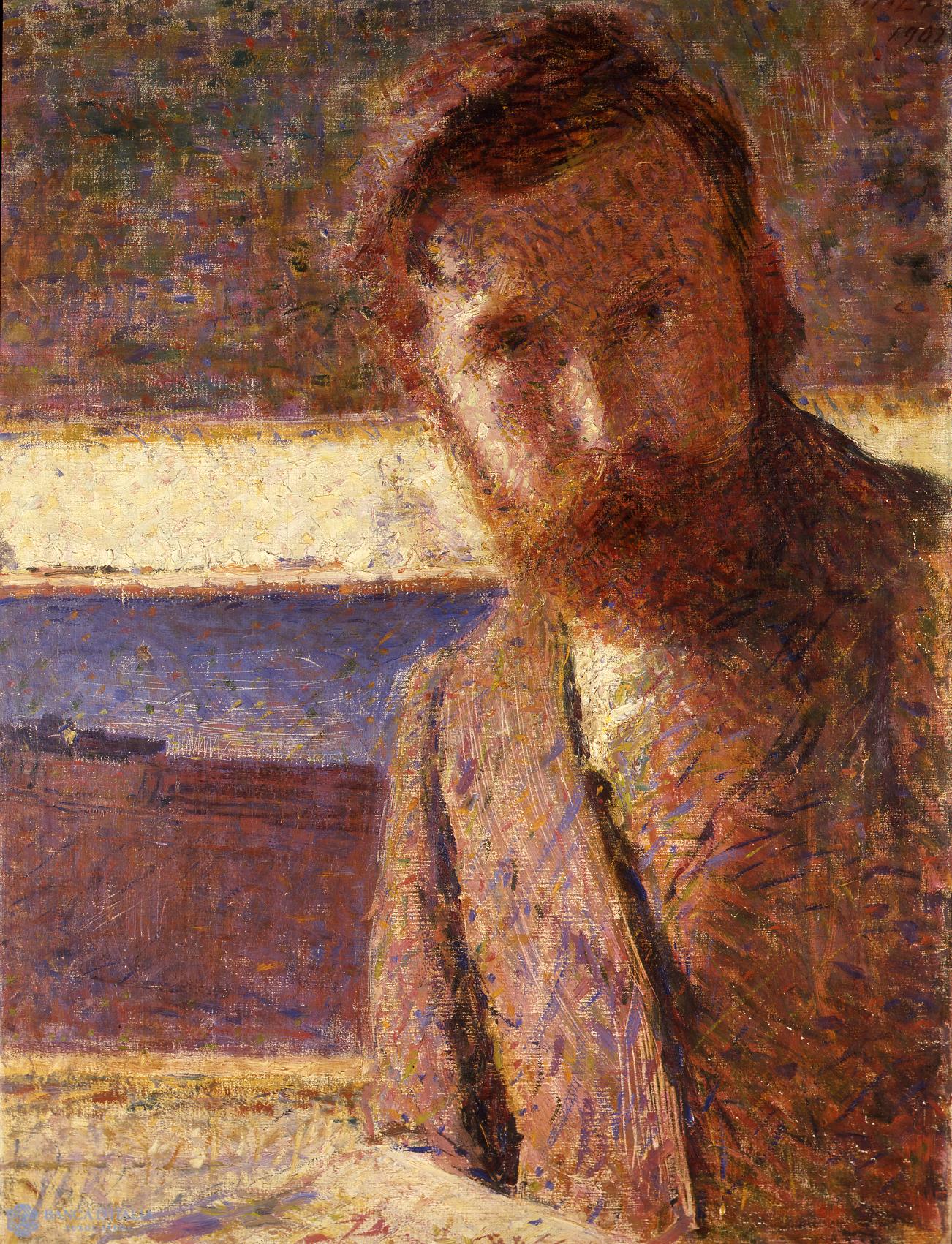
Works of art

I tre fratelli
The three brothers are two tall men, one on horseback, with a youth between them. Their bodies are marked by a rough power, as they stand out against a stormy sky. The language is summary but always structured so as to highlight the anatomical construction of the bodies.
Painting
20th century AD
Figurative

Il Tevere da via Ripetta
The view of the Tiber from via Ripetta is constructed on perspective flight that plunges from a balcony towards the river, in a series of swirls of volumes formed by the houses giving onto a horizon that coincides with the limits of the city. Warm swaths, offered by the sun, contrast with the dull green of the trees lining the Tiber.
Painting
20th century AD
Landscape
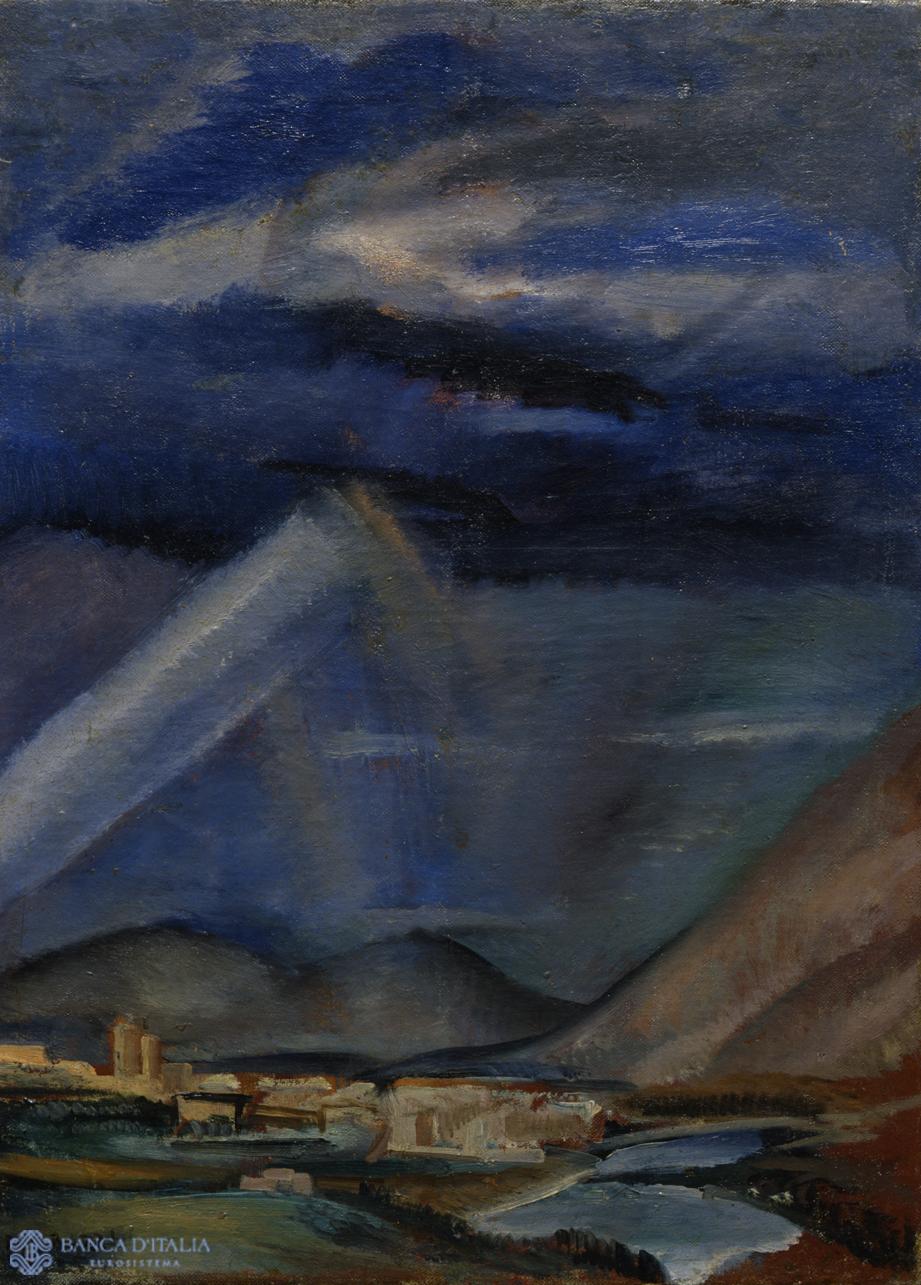
Tempesta sulla valle dell’Aniene
In his 1925 canvas depicting a storm on the Valley of the Aniene, Ferrazzi contrasts the quiet hamlet spread out below with a landscape which, invested by the bursting sky, fully reveals the artists dramatic vocation.
Painting
20th century AD
Landscape

Studio per Daphne a Pavarolo
This “Study for Daphne in Pavarolo”, dated 1933-34, is faithful to the scheme of the final work. It presents a seated woman in the foreground, facing front, somewhat to the left-hand side of the painting.
Painting
20th century AD
Landscape
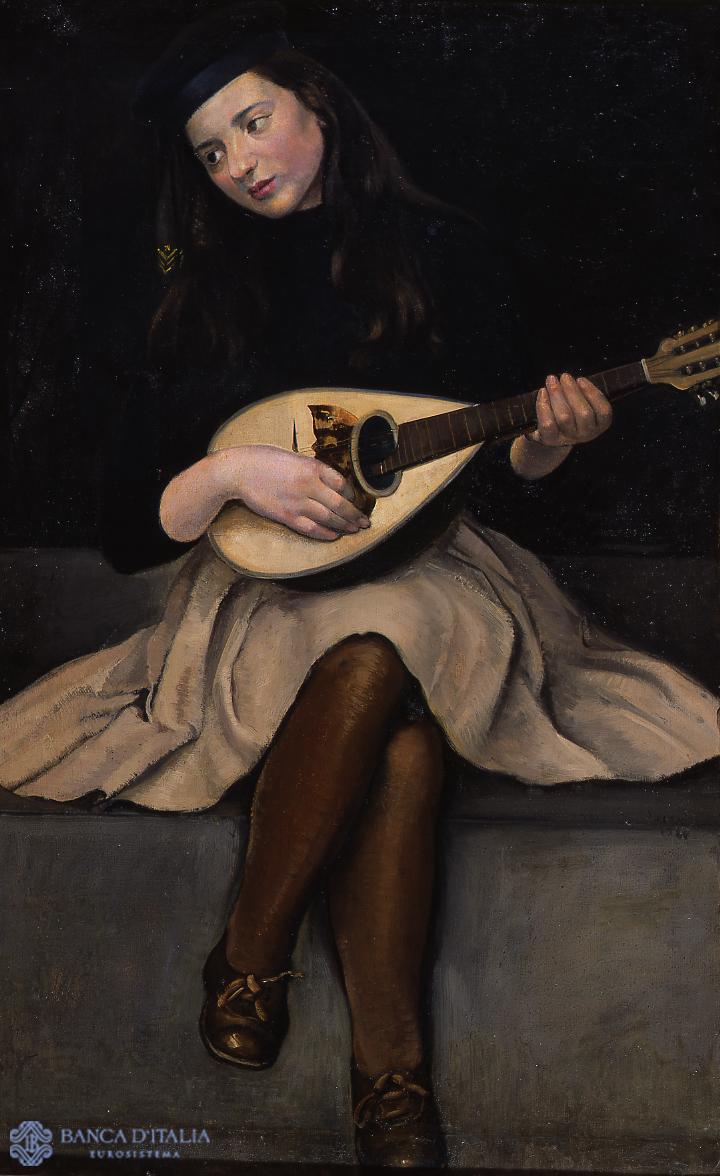
Ritratto di ragazza con mandolino
This “Portrait of a girl with mandolin” (sometimes also called simply Mandolino) is a perfect, radical example of Socrate’s adherence to the neo-museum school. Seen frontally with a slight inclination towards the left side of the painting, the girl is playing her musical instrument.
Painting
20th century AD
Portrait

La quiete
At the 1922 Venice Biennale Gualino was captivated by a large painting, La quiete (‘Tranquillity’) by the Turinese painter, Felice Carena, which was not for sale. Driven by admiration for what is probably the artist’s masterpiece, Gualino asked him to paint a second version for his collection, the one now on display in Palazzo Koch.
Painting
20th century AD
Figurative
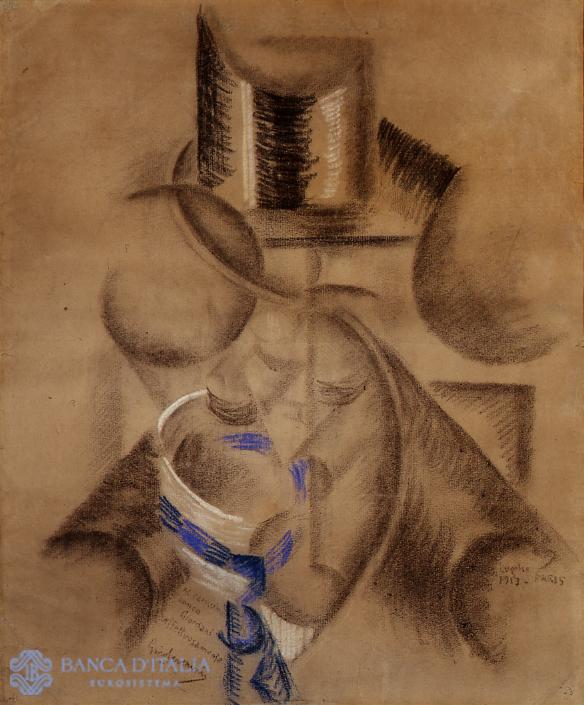
Ritratto del Dottor Giordani
Here we have precious testimony to Severini’s Futurist work in 1913. The date (even the month, July) and the name of the city where Severini was working (PARIS) are inscribed in the lower right, and to the left we have the dedication “Al carissimo amico Giordani affettuosamente Gino Severini” (to my dear friend Giordani with affection).
Painting
20th century AD
Portrait

Processione di ossessi
Sculpted in strong relief inside a recess that is lent depth by the play of shadow and light, the figures appear to bristle in febrile animation. An excited crowd moves downwards from the cross at the top, from which the procession starts.
Sculpture
20th century AD
Figurative

La pineta
The pine woods theme was recurrent in Carrà’s depictions of the Tuscan seaside. Here it is developed in a particular composition. At the centre is a dense group of Mediterranean pines that block out the entire upper part of the canvas, the slim trunks filtering the viewer’s gaze to the houses in the background.
Painting
20th century AD
Landscape

I pesci sacri
The painting is signed “G. de Chirico” in the lower right-hand corner. Ranking among the best replicas of one of the artist’s most celebrated metaphysical masterpieces, his famous “Sacred Fish”, first published in 1919 in a monograph for the review Valori Plastici.
Painting
20th century AD
Still life
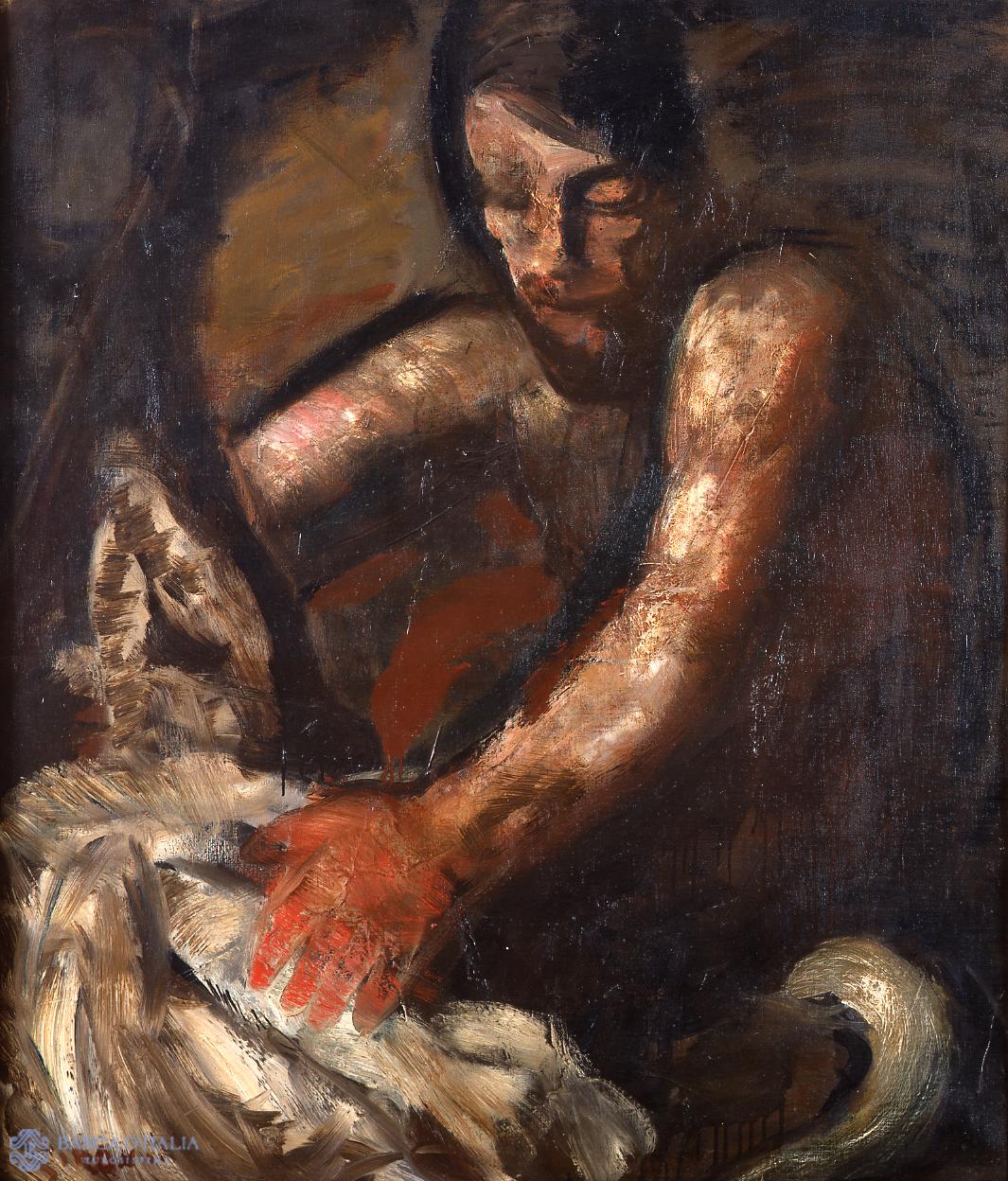
Pescatore
The fisherman hauling in his catch is viewed almost frontally. The outstretched arms form a sort of pincer, which thanks to splashes of light/colour, stand out against the dominant dark tones. The silvery fish consigned to the bottom left of the composition are like a source of cold light.
Painting
20th century AD
Figurative
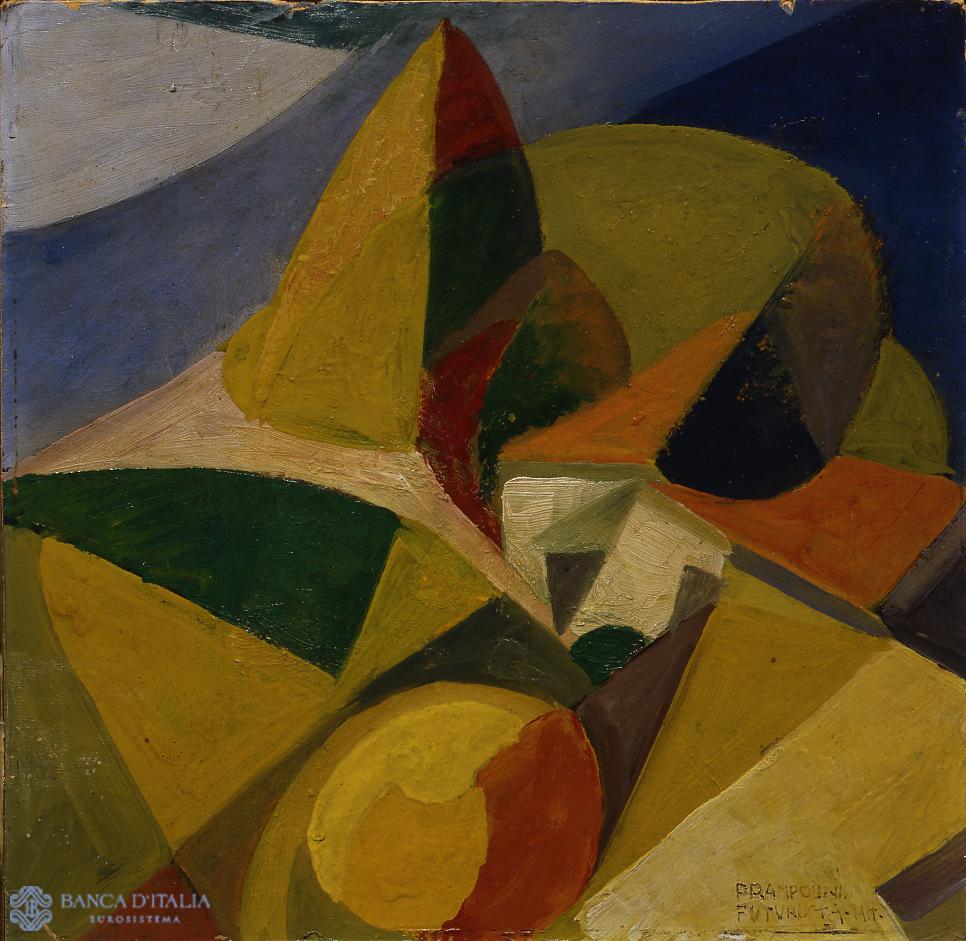
Paesaggio futurista
Despite its small size, probably because in reality it was a sketch, this is an intense painting. The colours are heavy but animated by violent contrasts between complementary tones (above all reds and greens), and they saturate the forms fanning out in space.
Painting
20th century AD
Abstract
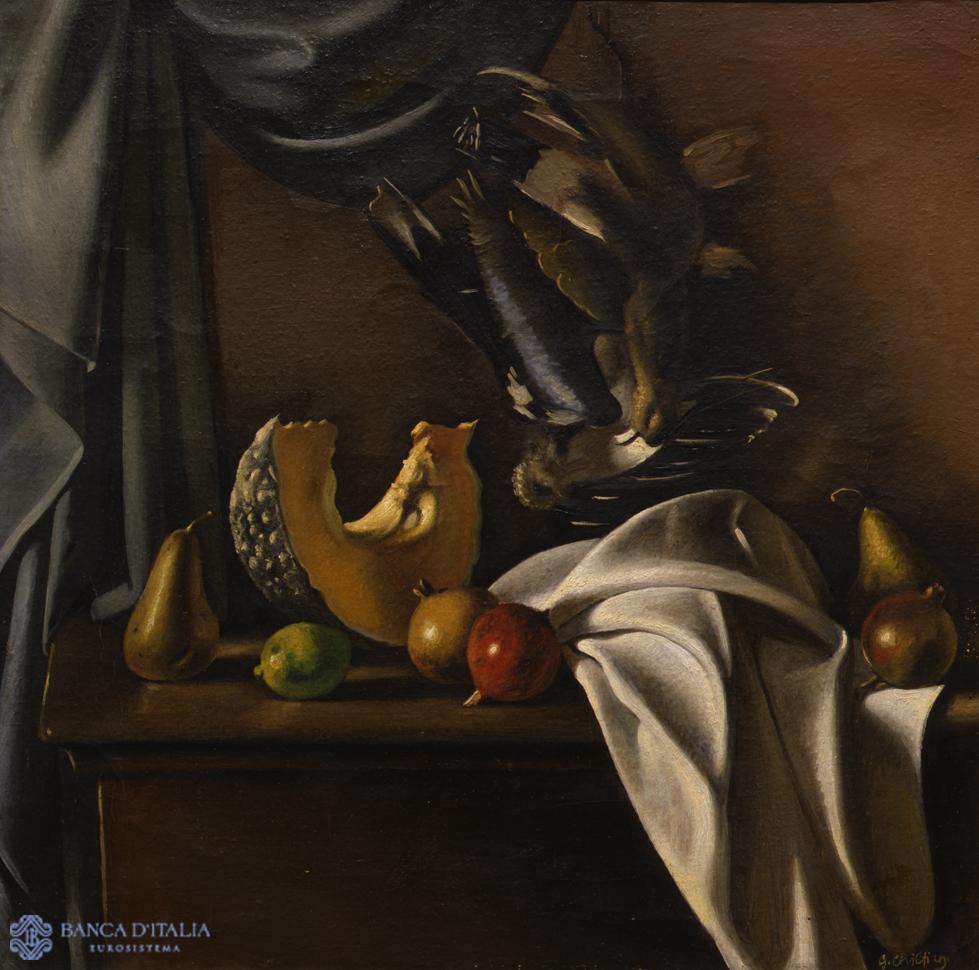
Natura morta con melograni, zucca e pere
This “Still life with pomegranates, squash and pears” typifies the painting of Gregor Sciltian. The fruits that act, as it were, as the protagonists are most elegantly displayed, alongside a white cloth flowing towards the lower portion of the canvas.
Painting
20th century AD
Still life
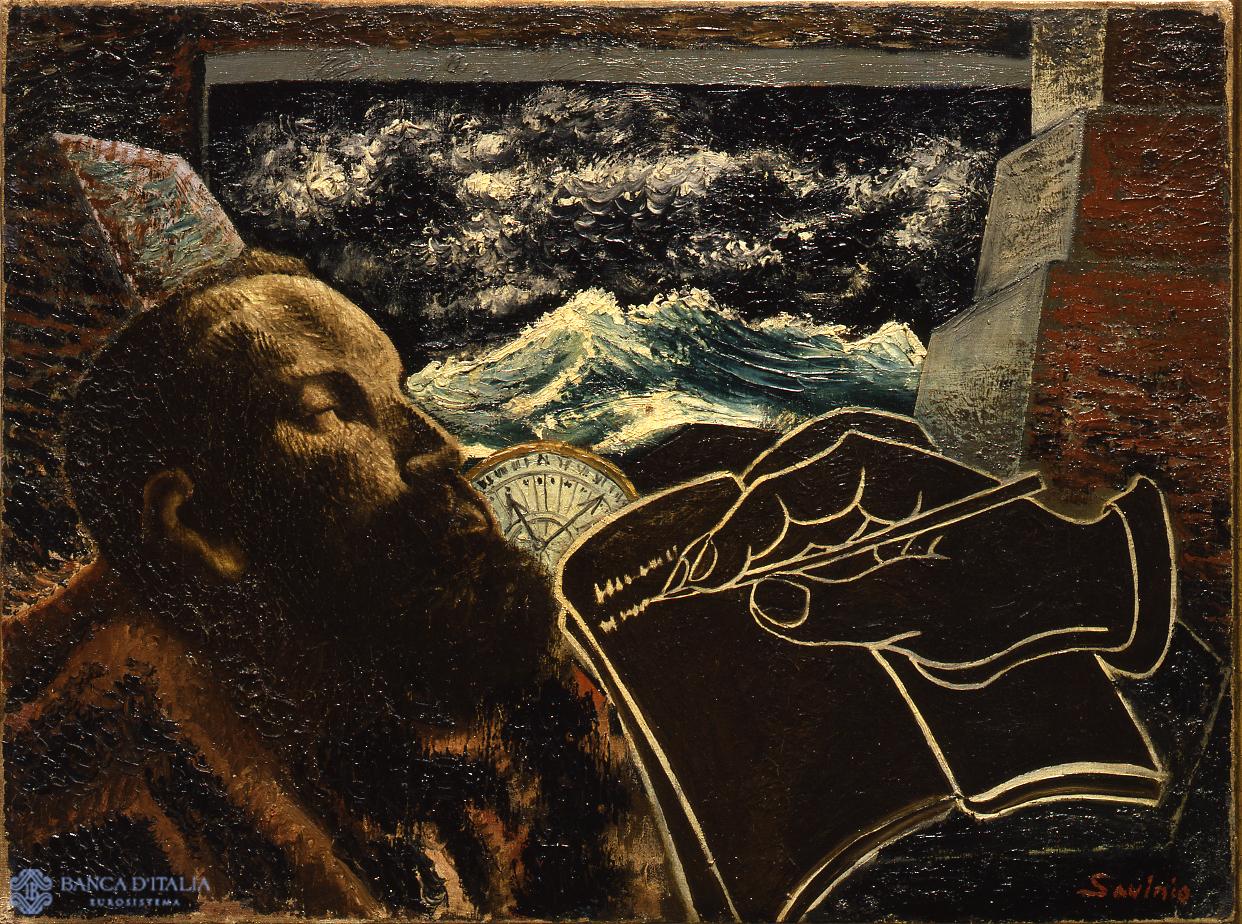
Le Matelot
In a personal show of 1927, Savinio exhibited a painting entitled Le Matelot (the sailor), which is presumably this work. Though it is generally assigned to 1928, Pia Vivarelli concluded that it should be backdated by one year given the likelihood of it being the same work as the one in the exhibition catalogue.
Painting
20th century AD
Figurative

Marina dopo il tramonto
This painting of the shore at dusk presents a lonely view, with the twilight tones of sea, land and sky, a melancholy seemingly accentuated by the single boat abandoned on the beach. The marine theme is a constant of Carrà’s interwar work.
Painting
20th century AD
Landscape

Fontana (che piange)
An authentic masterpiece of bravura, this pastel still belongs to Balla’s Divisionist period. The streaky brushstrokes are horizontal, distributed in dense tangles of material. Here the artist makes the most of his ability to depict the play of light on forms.
Painting
20th century AD
Landscape

Due donne
The two women face the viewer. The one on the left is near-frontal, although turned slightly to the right, the other turns just as slightly leftwards. The two faces are separate, each ideally located within a space of its own, no links between them.
Painting
20th century AD
Figurative

Diana di Efeso
Part of Aristide Sartorio’s complex research into the various facets of artistic language, this work illustrates the aspect most closely associated with literary or mythological references, against the backdrop of the particular direction taken by Decadentism in Italy, above all within the Roman artistic scene.
Painting
Biblical - Historical - Mythologic

Case di Borgogna
Two buildings at the right press toward the centre, surrounded by gloomy vegetation beneath a sky that, in the background, conveys a pale sunlight. The work is dated 1923, or after Tozzi’s endorsement of the poetics of Valori Plastici.
Painting
20th century AD
Landscape

Il carcere di Viareggio
The prison of Viareggio is essentially a mournful façade against which the sentry-box appears to lean. It is a leaden vision in which the background, obstructed by the prison’s façade and by a towering building behind it, is rent by a small patch of joyless sky.
Painting
20th century AD
Landscape

